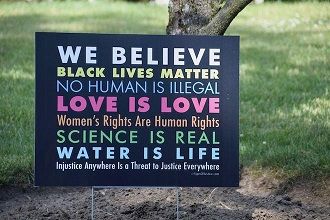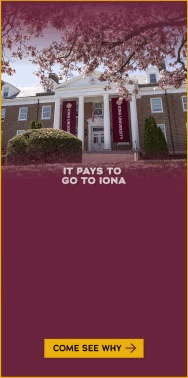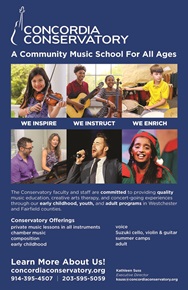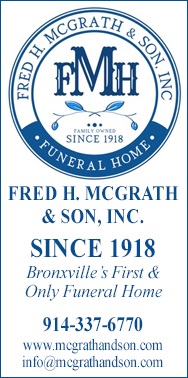Letter to the Editor: We Must Continue To Work For Change After Bronxville Unity Walk

Jul. 1, 2020: I am Annabelle Krause, a rising senior at the Bronxville High School. Next year, I will be the co-president of the Bronxville Human Rights Coalition Club.
On June 20, the town and our surrounding community rallied around the Black Lives Movement through the Unity Walk. I walked with some of my classmates, and we were happily surprised by the sheer number of people in attendance. I saw friends from Bronxville, as well as from the surrounding towns. This show of solidarity from the community was moving in its own way; a community coming together to fight for justice.
At the culmination of the walk, there were speakers at Village Hall. Many speakers shared their stories of race and injustice, in Bronxville, in Westchester, and in history at large. I spoke as a student on behalf of the high school.
In a town like Bronxville, we are no stranger to systemic racism and discrimination of all forms, and we are hardly alone in that. Often, this is the hidden story. Every other year, our Village hosts Ghost of Bronxville to celebrate the artisans and founding members of our community. Although this is an interesting historical experience (and fun for little kids), it cannot exist in a vacuum.
The first time I heard about the village’s darker past in a formal setting was this past year in my Humanities Seminar at school. We discussed not only Bronxville, but also systemic issues in the greater United States. We read an article entitled Gentlemen’s Agreement in Bronxville: The “Holy Square Mile” written in 1959. The author, Harry Gersh, was an investigative journalist who tried to buy a house in the school district under a stereotypical Jewish last name, Greenberg. He was turned away by every real estate agent he met as soon as he told them his last name. The students and residents of this town must understand that the homogeneity of our population is not an accident, but the result of blatant historical housing discrimination.
So, sitting in our seats of privilege as a majority white, Christian suburb, we cannot stop now. We rallied to show support, and now all those who support continued change must work to create real change.
Vote, donate, call your representatives, do your research, have hard conversations about race and injustice. There are many avenues to push our community and the United States towards a more equal society, one where the color of your skin does not determine your life expectancy and opportunities.
Photo by A. Warner
Editor's note: As a public service, MyhometownBronxville publishes articles from local institutions, officeholders, and individuals. MyhometownBronxville does not fact-check statements therein, and any opinions expressed do not necessarily reflect the thinking of its staff.
Letters Directory
Bronxville is a quaint village (one square mile) located just 16 miles north of midtown Manhattan (roughly 30 minutes on the train) and has a population of approximately 6,500. It is known as a premier community with an excellent public school (K-12) and easy access to Manhattan. Bronxville offers many amenities including an attractive business district, a hospital (Lawrence Hospital), public paddle and tennis courts, fine dining at local restaurants, two private country clubs and a community library.
While the earliest settlers of Bronxville date back to the first half of the 18th century, the history of the modern suburb of Bronxville began in 1890 when William Van Duzer Lawrence purchased a farm and commissioned the architect, William A. Bates, to design a planned community of houses for well-known artists and professionals that became a thriving art colony. This community, now called Lawrence Park, is listed on the National register of Historic Places and many of the homes still have artists’ studios. A neighborhood association within Lawrence Park called “The Hilltop Association” keeps this heritage alive with art shows and other events for neighbors.
Bronxville offers many charming neighborhoods as well as a variety of living options for residents including single family homes, town houses, cooperatives and condominiums. One of the chief benefits of living in “the village” is that your children can attend the Bronxville School.
The Bronxville postal zone (10708, known as “Bronxville PO”) includes the village of Bronxville as well as the Chester Heights section of Eastchester, parts of Tuckahoe and the Lawrence Park West, Cedar Knolls, Armour Villa and Longvale sections of Yonkers. Many of these areas have their own distinct character. For instance, the Armour Villa section has many historic homes and even has its own newsletter called “The Villa Voice” which reports on neighborhood news.
Village of Bronxville Administrative Offices
337-6500
Open 9:00am - 4pm excluding holidays and weekends
Bronxville Police Department
337-0500
Open 24 hours
Bronxville Parking Violations
337-2024
Open 9:00am - 4pm excluding holidays and weekends
Bronxville Fire Deparment
793-6400






